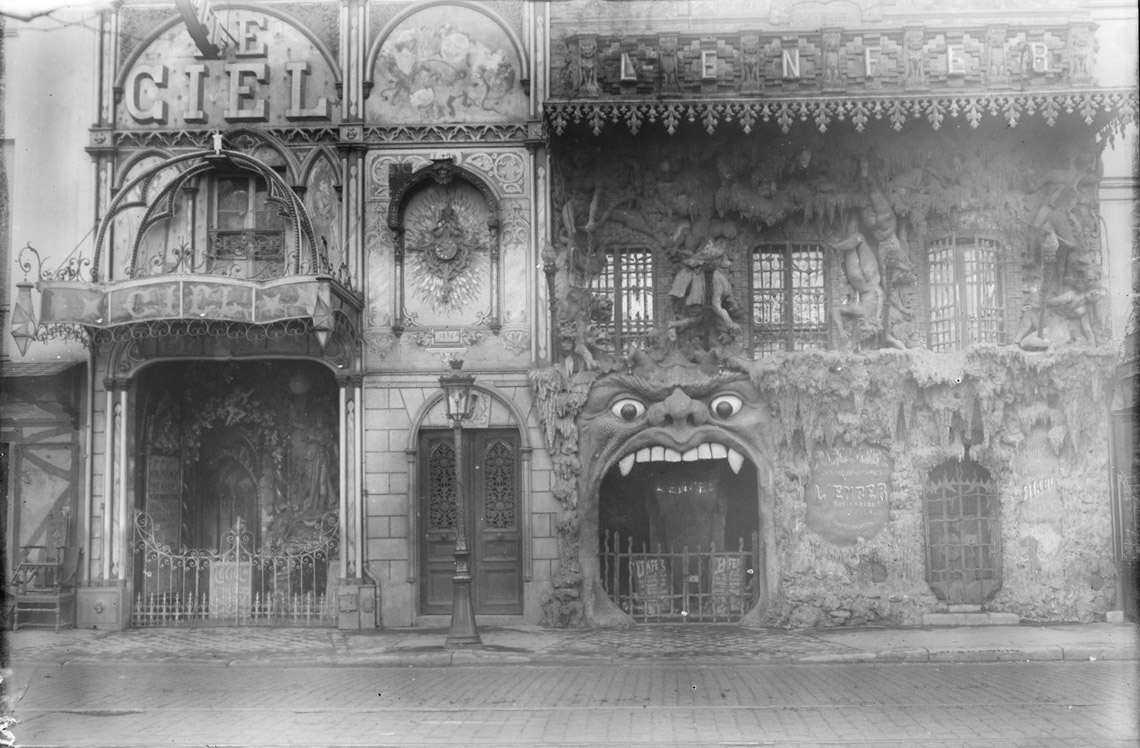In the 1890s, at the foot of Montmartre, various unusual cabarets, each more eccentric and extravagant than the last, opened their doors. Among them, the Cabaret du Ciel, the Cabaret de l’Enfer, and the Cabaret du Néant caused a sensation. These three establishments exploited the different themes of the afterlife to entertain a diverse clientele in search of phantasmagorical and surprising entertainment. Want to discover the world and macabre oddities of these “themed” cabarets? Then book your ticket and let the show begin!
The Cabaret of Heaven
Our tour begins at 53 Boulevard de Clichy, in the least lurid of the three unusual cabaret venues, the Cabaret of Heaven. The idea behind this establishment was to parody religious rites and ceremonies, while injecting a touch of eroticism.
Its blue and white facade, adorned with twinkling stars and sculptures of cherubs, immediately emphasized the theme of Heaven. Upon entering, visitors landed beneath the vaulted ceiling of a vast, cathedral-like room. In the center of it was a “celestial banquet”: a long table around which nectars and other sacred beverages were drunk from chalices, while solemn notes from the organ or harp resounded.
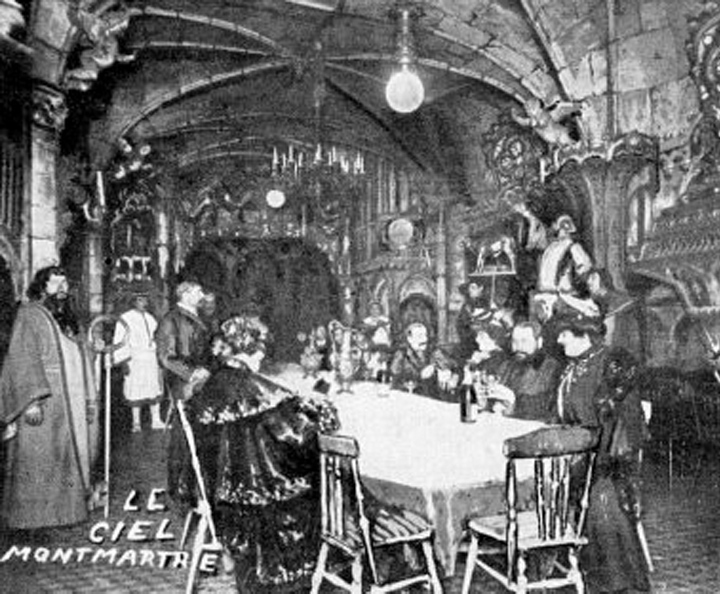
While quenching their thirst, the customers listened in turn to the preaching of the master of ceremonies (a man with a long beard dressed in a kind of magician’s robe), performances by nude dancers, and a succession of sketches depicting the pleasures of Paradise in a humorous and erotic manner. The atmosphere was intended to be more jovial than angelic, even though the waiters wore white tunics, curly blond wigs, and wings on their backs like seraphim… and the customers were sprinkled with holy water!
A man representing Saint Peter, holding a large key, then guided the guests to the first floor, as if to symbolize the ascent to Heaven. There, in a room decorated with countless golden stalactites, spectators admired angels suspended in the air and other divine and mischievous optical illusions, giving them the feeling of having truly landed in Heaven.
At the end of the show, Saint Peter ushered visitors to the unusual neighboring cabaret: the Cabaret de l’Enfer.
The Cabaret of Hell
For our next destination, there was no need to go far, since the Hell cabaret adjoined the Heaven cabaret.
Like an evil twin, it “swallowed” those who dared to venture inside through an imposing and monstrous door shaped like a gaping maw with sharp fangs and topped with two bulging eyes. Its impressive black and red façade probably gave onlookers the impression of entering a haunted house at a funfair.
At the entrance, a doorman dressed as Mephistopheles exclaiming “Enter, and be damned!” immediately set the mood, though it was more amusing than truly frightening. Visitors then discovered a cave-like setting made up of numerous demonic sculptures. The walls, from which smoke escaped, were dotted with cavities from which molten lava flowed.
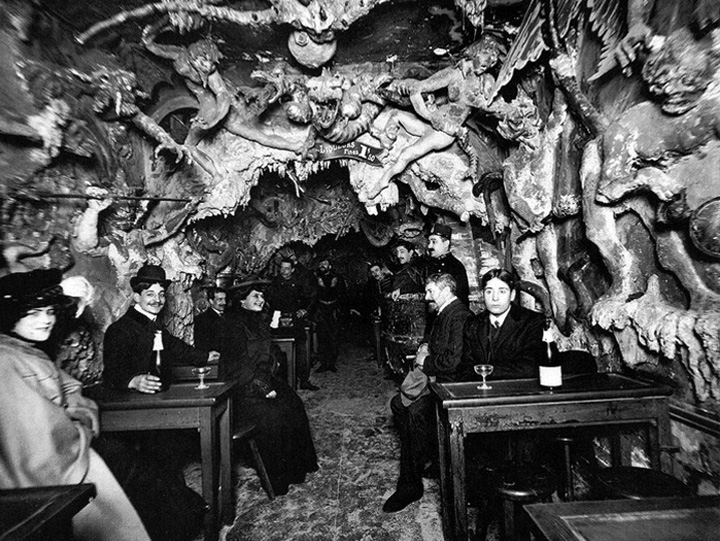
While a man dressed as Satan addressed the seated customers, orders were taken and served by imps. As for the musicians, they “simmered” in a large cauldron, which was actually just another eccentric attraction for the “damned” who, in turn, wanted to pretend to be boiling in it.
Satan then ordered the customers to be led into his lair: a room where perverse optical illusions and various diabolical acts were performed amidst peals of laughter.
The Cabaret du Néant
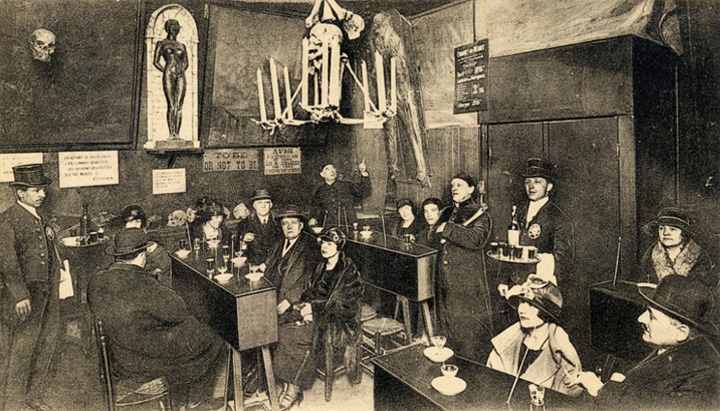
But it was in the “vault of the dead,” the damp and dark room where the main show took place, that the macabre escalated. After purchasing a candle, patrons sat on benches facing a stage on which a coffin stood upright. One member of the audience was then invited to sit inside the coffin and decompose before the spectators’ eyes, eventually transforming into a skeleton, thanks to an ingenious optical illusion.
Although it attracted crowds of onlookers, the Néant cabaret quickly acquired a bad reputation. This was due to shows that were often considered more sinister and decadent than parodic. Not to everyone’s taste, they sometimes sparked harsh criticism in the press.
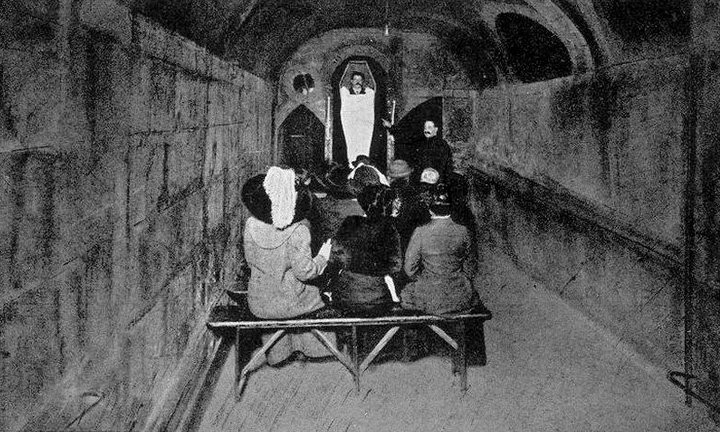
After two world wars, flirting with death was no longer popular. It was only natural that these unusual cabarets of a sinister kind would eventually disappear. Today, the concept of themed restaurants remains; and it is now music-hall cabarets with their magical and glamorous atmosphere that attract customers, like the Paradis Latin, the oldest cabaret in Paris, and its extraordinary show.




